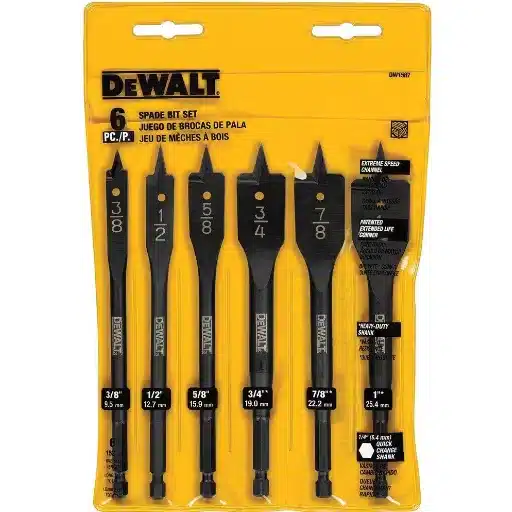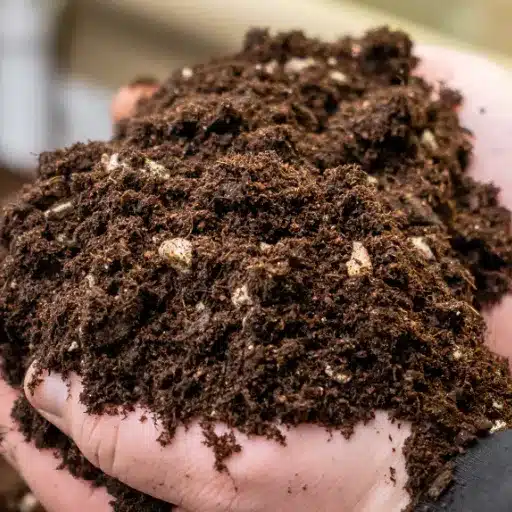Creating your own capsules for microdosing is an efficient, customizable, and precise way to manage your intake of powders, whether for supplemental, therapeutic, or experimental purposes. This guide will explore the most effective techniques and tools needed to produce capsules with consistent measurements and optimal results. By understanding the best practices and equipment available, you can streamline the process and ensure your capsules meet your exact requirements. Whether you’re a beginner looking for a seamless way to get started or an experienced user refining your methods, this article has the information you need to take full control over your microdosing routine.
What is a Capsule Filler and How Does it Work?
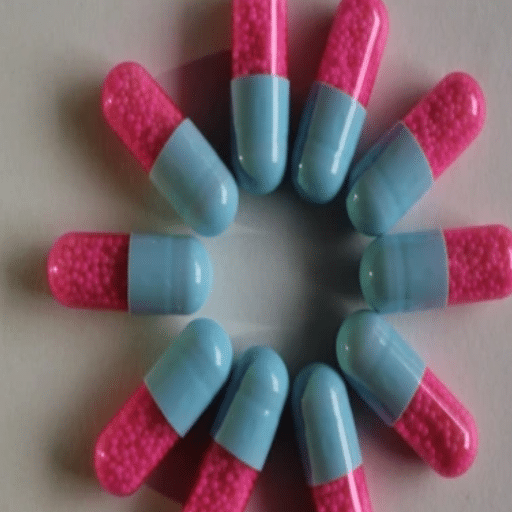
Understanding the Basics of Capsule Filling Machines
A capsule filling machine is a device that automates or simplifies the filling of empty capsules with powders, granules, or any other substances, thus ensuring accurate dosing. These machines find application in the pharmaceutical, nutraceutical, and personal use fields because of their ability to enhance the precision and efficiency of capsule production at larger scales. When the filling process is automated or simplified, capsule dosing is done more uniformly, and potential errors from human encapsulation are greatly reduced.
A capsule filling machine works on certain basic principles. To start, empty capsules are buckled into the machine, which will orient and split them into two sections (cap and body). After that, the filler to be filled is dispensed into the capsule body, which can be controlled for better precision. In a more advanced filling phase, the body of the capsule is sealed off with a cap. This process, referred to as encapsulation, is done and completed. Modern versions of a machine may possess the ability to deal with other sizes and fillers of capsules, as well as different materials, and these add to the versatility of such machines.
The two primary varieties of capsule filling machines are manual and automatic. While manual machines are more suited for small-scale or personal production since they need to be operated by hand, automatic machines are more efficient and suited for industrial-scale operations. Irrespective of type, all filling machines are required to meet particular needs like production volume, material compatibility, and budget to provide the best results.
Exploring Different Capsule Sizes for Microdosing
Employing a capsule filling machine comes with its fair share of advantages, particularly in fields that demand accuracy and speed. To begin with, the ability to fill a significant number of capsules in a short period, compared to machine-free filling, is one of the most noted advantages. This level of speed is beneficial not just in commercial setups, but also in research situations where volume is essential.
Moreover, capsule filling machines offer uniformity in terms of dosage and weight. Capsule fillers are built with a set of mechanisms that guarantee infusion to give the least variability possible between capsules. This is extremely important in the production of pharmaceuticals and nutraceuticals, where accurate dosing directly translates to product strength and safety. The use of a capsule filling machine diminishes human error, which increases dependability.
Far from that, capsule filling machines can fill a wide variety of capsule shapes and sizes, such as gelatin and vegetarian capsules. Furthermore, many of these machines have features like adjustable filling weights and tamper-resistance, which means they can be specifically designed for particular formulations. Not only that, these machines are built to ensure the highest standards of industry quality, which guarantees compliance with legal regulations and other necessary guidelines related to cleanliness and manufacturing.
Benefits of Using a Capsule Filling Machine
Using a capsule filling machine provides numerous distinct benefits, particularly where accuracy and efficiency are essential. One of the key advantages is being able to mass produce capsules in a fraction of the time required for manual filling. This time savings is important in commercial and research settings focused on scalability.
A wider range of capsule types, including gelatin and vegetarian capsules, can be used in capsule filling machines, thus adding to versatility. Most machines also have adjustable treat fill weights and tamper-proof features, allowing specific formulations to be modified with ease. These machines are engineered to stringent industry guidelines, thus ensuring meeting regulatory requirements and uphold hygiene and manufacturing standards.
Another important advantage is maintaining the same dosage and weight, where every capsule has to be filled. Capsule filling machines have mechanisms that minimize differences between capsules by ensuring filling is uniform. This is important in pharmaceutical and nutraceutical production because precision in dosing affects product efficacy and safety. The use of a capsule filling machine also eliminates the chance of hindering variability, thus increasing reliability.
How to Choose the Right Capsule Filling Kit for Your Needs?
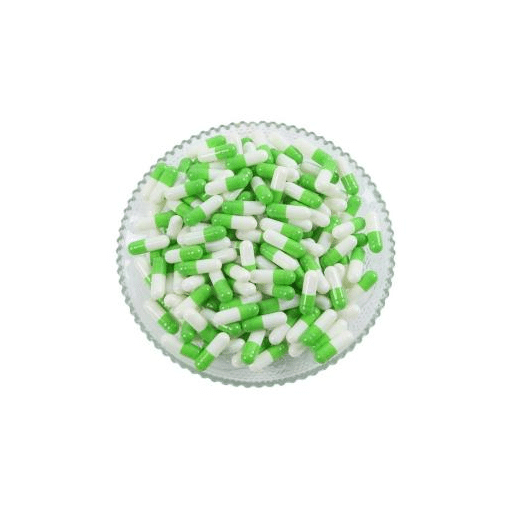
Essential Tools in a Capsule Filling Kit
A specialized kit for capsule filling aims to maximize productivity while providing accuracy and consistency within the encapsulation process of pharmaceuticals or dietary supplements manufacturing. The majority of these kits come with a capsule holder or tray that reliably holds all capsules in place during the filling process. The main tamper tool is essential in compacting the filling material so the capsules have the same weight and density, which is important for consistency. A scraper or spreader is provided to polish the surface of the powder or granules within the capsule filling tray to achieve accurate dosages with minimal wastage.
Advanced kits may include devices like a capsule separator, which increases the rate of production by making the process of capsule body and cap separation faster. For better adaptability, some of these kits can accommodate capsule size 00 and even smaller size 4, making them more functional. It is very important to understand the material makeup of these tools because higher quality kits are outfitted with durable, BPA-applicable plastics or food-grade stainless steel, making them safe and hygienic.
With the right selection of tools, under the appropriate specifications, the tools will make the encapsulation process more precise and efficient, making them ideal for small batch production and R&D settings.
Comparing Empty Capsules for Different Dosages
Empty capsules for different dosages range from size 000 (largest) to size 5 (smallest), differing in volume, weight, and capacity.
| Attribute | 000 | 00 | 0 | 1 | 2 | 3 | 4 | 5 |
|---|---|---|---|---|---|---|---|---|
|
Capacity (ml) |
1.37 |
0.95 |
0.68 |
0.50 |
0.37 |
0.30 |
0.21 |
0.13 |
|
Mass (mg) |
158 |
123 |
98 |
76 |
61 |
48 |
38 |
28 |
|
Fill (mg) |
1370 |
950 |
680 |
500 |
370 |
300 |
210 |
130 |
|
Height (mm) |
26.1 |
23.3 |
21.7 |
19.4 |
17.5 |
15.9 |
14.3 |
11.1 |
|
Width (mm) |
9.91 |
8.56 |
7.64 |
6.91 |
6.35 |
5.85 |
5.33 |
4.91 |
|
Purpose |
High |
Medium |
Medium |
Low |
Low |
Small |
Small |
Micro |
Tips for Selecting a Capsule Filling Kit for Beginners
The balance between ease of use, quality, and performance makes ‘how to fill capsules kit for beginners’ an appropriate search prompt. As always, begin with identifying the capsule size because kits typically accommodate specific sizes such as 0, 00, or 1. Avoid strenuous instruction manuals by selecting kits with proper instructions accompanied by ergonomic designs, as such features reduce the risks of errors occurring.
Next, analyze the materials that comprise the kit. Food grade stainless steel for mechanical parts and durable BPA-free plastic,s constructed parts of the kit are examples of high-quality materials, elongating the lifespan of the kit whilst maintaining safety. Advanced users would require more practical, adjustable tools such as the ones with movable tampers or those with several stations for increased output.
Beginners who wish to produce capsules in small quantities should select a kit with measuring and storing tools to enable precise dosing and effective organization. In addition to the specifications given by reviewers, user feedback is a focal point as it sheds light on issues concerning ease of cleaning and durability of components. The capsule filling kit aids in saving both time and resources, but encompasses advanced features that are beneficial regardless of the user’s skills.
What are the Steps to Fill Capsules with Powder?
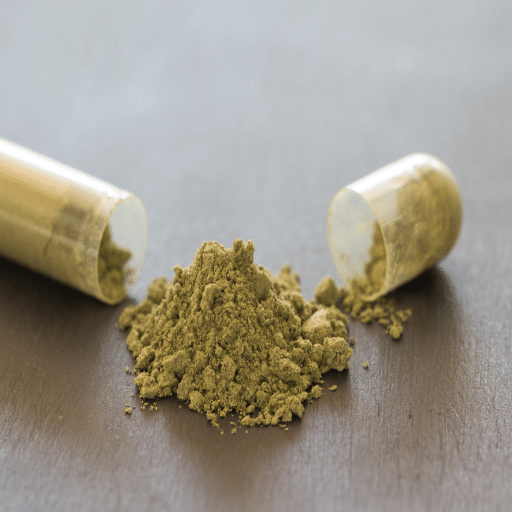
Preparing Your Powder for Encapsulation
To guarantee thorough and accurate encapsulation, optimal preparation of the powder is vital. The active ingredient, as well as any excipients on the medication’s label, should be accurately dosed using a digital scale with sufficient precision. Excipients comprise fillers, binders, or flow-promoting agents that could augment sucrose compounds, enhance cohesion and capsule volumetric consistency, or improve the flow of the powder through the capsule filling device.
Blend the entire mixture of powders in a pharmaceutical mortar and pestle, or with a V-blender, which can also serve as an advanced powder mixer, to ensure that blending achieves uniformity. Dosage accuracy among the capsules hinges on this step. If dealing with some fragile components, those that might be further irradiated with humidity for an extended period due to harsh conditions, consider complete removal of moisture or preparing in a low-humidity environment.
Sieve the powder beforehand with a fine mesh sieve to get rid of chunks or prevent uneven particles before encapsulation to facilitate smooth filling. The refinement of the powder drastically enhances the capsule filling procedure while also greatly improving the quality of the final product, making certain that the product performs consistently and demonstrates reliable bioavailability.
Step-by-Step Guide to Fill Capsules Manually
- Arrangement of Materials and Workspace
Start by gathering all materials, such as the empty capsules, the powdered substance, a filler tray, and the tamping tool. Make certain the workspace is well-maintained and free of clutter, pollutants, and direct light. When dealing with fine powders, it can be useful to wear a mask and gloves to prevent hygienic threats as well as inhalation of fine particles. Environmental factors such as temperature and humidity should be regulated to avoid changes in the powder or capsules, such as clumping or solid deformation.
- Loading the Capsule Filler Tray
Disconnect the capsule halves and remove the longer bodies from the caps. Take out the longer bodies and place them into the appropriate slots on the capsule tray’s base. Modern fillers normally possess some form of modernization for the proper alignment of the bodies so that they are all put correctly and facing up.
- Filling the Capsules
Ensure that the Bothers of the prepared capsules are topped off with the appropriate powder with oladeng spoons for scrapers. To help the powder settle and move, some gentle rocking of the filler tray can be used generously. Make use of the tuners to ensure settlement of the powder is settled to have even weight distribution and adequate filling without overflowing the capsule. Do this until the desired level and amount is reached for every want of the body of the capsule.
- Capping and Sealing
Once the capsule filling process has been completed, take the shorter caps and match them with the filled bodies by making use of the top plate of the capsule filler. Gently yet firmly press to snap the capsule halves together, forming an adequate seal. Check that the capsules are closed adequately without leaking powder.
- Quality Control and Final Inspection
Visually check and fill each capsule to ensure that the fill levels are uniform, sealed correctly, and check for overall integrity. Defective capsules are to be removed alongside damaged ones. To maintain the defined criteria, some capsules need to be weighed individually from time to time to check for consistency, uniformity, and value against set standards.
- Storage and Labeling
Place the capsules in an airtight container to shield them against moisture and other damaging factors. Capsule labeling should include constituents, batch number, and expiration date for easy identification and proper usage.
Using these methods will allow you to achieve minimal variability encapsulation and maximize product effectiveness. The process, while detailed, is still cost-efficient and flexible, suitable for custom formulation and small-scale production.
Ensuring Accuracy and Consistency in Dosages
In order to maintain accuracy and precision in dosing, I start the process with a uniformly structured weighing system that incorporates sophisticated tools such as high-sensitivity analytical balances. With these instruments at hand, I can measure every single ingredient with precision and avoid straying from predetermined amounts. I ensure equipment reliability by meticulously calibrating the instruments before use and trusting them throughout the entire process.
I also implement additional guidelines to control for any variance encountered during the mixing and encapsulation stages. This incorporates employing consistent mixing times, rotation speeds, temperature, and even humidity controls for the environment. Maintaining these factors enables me to achieve precise and uniform ingredient distribution, dosage, and concentration of active compounds in each dose. Regular quality control checks during production are vital since they allow me to identify and rectify inconsistencies that would otherwise affect the final output.
In the end, the completeness of quality assurance and traceability relies on the rigorous attachment of documentation and labeling. I record every step of the process, which includes taking measurements, batch numbering, and even noting down control results in order to check compliance with set standards. Adequate labeling ensures formulation alignment of active compounds in each capsule for the intended purpose, safeguarding end users’ safety and well-being. Following these dosage results enables me to consistently produce accurate dosages with minimal discrepancies.
Can You Use a Mushroom Capsule Filling Machine?

Benefits of Encapsulating Mushroom Powders
The process of encapsulation of mushroom powders is one of the most effective and modern methods of administering the health benefits of different species of mushrooms. Below are five primary advantages of this process:
- Better Control of Dosage: Encapsulation guarantees accurate dosage measurement of mushroom powder. Every capsule will achieve the desired therapeutic effectiveness as a result, mitigating the health risks associated with underdosing or overdosing.
- Enhanced Bioavailability: Encapsulation can also help retain the bioactive ingredients present in mushroom powders like polysaccharides, beta-glucans, and triterpenes. Because of moisture and oxygen control, bioactive compounds bolster the therapeutic effect as a result of better absorption by the body.
- Ease of Consumption: Many people find the flavor or texture of mushroom powder unappealing. Encapsulation of these powders transforms them into neutral capsules that can be taken daily without worry.
- Improved Shelf Life and Stability: Encapsulated powders are protected from air, moisture, and light. Decreased exposure leads to lower rates of degradation and increased shelf-life while ensuring the product will be potent and effective for longer periods of time.
- Clean and Travel-Friendly: The method of encapsulation places mushroom powders in a sealed and clean capsule that has not been tampered with. This enhances hygienic measures and provides a portable solution that does not create a mess for users who need to take their supplements while travelling.
By using these advantages, both businesses and consumers are assured that encapsulated mushroom powders optimally serve usability and health purposes.
How to Use a Mushroom Capsule Machine Safely
Operating a mushroom capsule machine involves following strict safety procedures as they relate to the quality, consistency, and hygiene of the capsules. Observe the following steps for proper use:
- Prepare A Clean Workspace: Before capsule creation, make sure that your workspace is free of any contaminants. All parts of the apparatus are to be cleaned using the correct disinfectant. All parts must be dried thoroughly. This step goes a long way in ensuring that there is no risk of contamination of the capsules.
- Verify Raw Material Quality: Examine the mushroom powder to ensure that it is uniform and does not contain any lumps, foreign materials, or moisture. Any of these factors can hinder the filling process as well as affect the stability of the shelf.
- Understand the Capacity of the Machine: Read the manufacturer’s manual for machine specifications on size and number of capsules to be processed in a single batch. It is not recommended to strain overload the machine, as that places unnecessary strain on it.
- Assemble the machine properly: Make sure to abide by the step-by-step instructions designed for securely assembling the machine. Not adhering to those steps can result in incorrect filling and assembly. Make sure to check all parts, including the filler tray and tamper, to guarantee that everything is properly aligned.
- Measure the Powder Accurately: For dosage precision, fill the mushroom capsule powder using measurement controls such as a precision scale. The measuring technique for filling should focus on achieving consistency and accuracy since a deficiency in this step will affect safety and efficacy.
- Fill Capsules Systematically: Distribute the empty capsule bottoms into the assigned trays. Dispense the required mushroom powder into capsules using a spreader tool. Do not exert too much force as spillage can happen, creating result inconsistencies.
- Inspect and Store Finished Capsules: Perform, store the unfinished mushroom capsules in UV-resistant, air-tight containers. Visually assess the completed capsules to confirm that encapsulation has been performed while ensuring uniformity. Record/date details on the container to aid proper inventory oversight.
- Maintain and Clean the Machine After Use: Once the use of machine is used, disassemble the system and clean every part. Utilize a specialized brush or a contoured air tool to eliminate leftover powder hidden in tight spaces. The device’s duration will be improved with periodical lubrication on mobile components as indicated by the creator’s guide.
- Follow all Safety and Compliance policies: Observe all relevant policies regarding safety and compliance applicable to your location concerning supplement manufacturing. This step guarantees that the product protects the law and consumers adequately.
By following these practices, users can achieve an ideal balance of safety and high-quality output from their mushroom capsule machine.
Cleaning and Maintaining Your Mushroom Capsule Filler
Cleaning and maintenance procedures lift operational efficiency, quality control, and longevity for your mushroom capsule filler. Inadequate maintenance may result in machine contamination, degradation, and variability in production. Best practices are described below:
- Inspect and Disassemble Parts Frequently: The unit should be cleaned through disassembly. Consider all contact surfaces, seals, moving parts, and surfaces for residue, garnishes, or wear and tear. This singular step aids in identifying processes or components that require servicing or replacement.
- Use Specific Cleaners: Instruments made of food-grade polymers or stainless steel should be handled with care. Make use of non-programming cleaning solutions, as abrasives will strip the protective layer and add risk to the finish and product safety, and harsh chemicals can further damage the filler materials. Be sure to check the manufacturer’s recommended cleaning tools and solutions.
- Prevention of contamination with sanitizers: Ensure to use appropriate food-grade sanitizers active against common contaminants to uphold hygienic standards post-cleaning. Electric-gate lips and contacts must be sanitized to guarantee that standards of hygiene will be maintained.
- Thoroughly Dry Every Component: Microbial growth and corrosion are enabled through moisture under the filler machine. Considering the risks, use lint-free towels for water removal with disassembled components, and ensure air drying for risk-free corrosion post-reassembly.
- Lubrication of Mechanisms: Apply lubricating agents to the moving parts, like joints and hinges, that require movement for their clear operation. Food-grade lubricating agents should be used. Avoid over-lubrication, as it might make material movement slower.
- Establish Maintenance Schedule: Routine and deep cleaning should be programmed based on the workload and intensity of use. Strive to achieve comprehensive maintenance every 100-200 hours of operation to reduce downtime and enhance maintain/machine maintenance efficiency. Extend the lifespan of the machine with proper maintenance.
- Post Cleaning Calibration Verification: Skeleton verification of a machine following reassembly is of utmost importance and needs to be done for calibration settings. This is important to make sure the machine optimally fills capsules with the utmost accuracy.
Industry-standard cleaning protocols guarantee accuracy and greatly improve capsule quality consistency while also enhancing the serving time of the machine and ensuring machine regulatory compliance.
What are the Best Practices for Storing Filled Capsules?

Packaging Options for Gelatin and Veggie Capsules
Maintenance of proper packaging is essential in maintaining the quality, stability, and integrity of both gelatin and veggie capsules. Environmental conditions like humidity and temperature take a toll on gelatin capsules. Foil blister packs, as well as other high moisture barrier foil materials, need to be used for gelatin capsules because they limit humidity exposure to the capsules, which can result in deformation, brittleness, or even alter the capsules. Alternatively, HDPE (high-density polyethylene) bottles with tamper-evident clasps are sturdiest and sealed, which maintains ne environment for the capsule, aiding in maintaining elasticity and preventing brittleness.
Hyperpropyl methylcellulose (HPMC) made veggie capsules are more resistant to moisture fluctuations in the environment compared to gelatin capsules. In order to maintain the ingredient of remaining opaque and air-tight, it is essential to place the capsule on a surface to keep out light. Along with veggie capsules, both types of these capsules contain desiccants to reduce moisture seeping in at the time, ensuring long shelf life.
The choice of a suitable package should correspond with the market distribution channel and legal requirements. For example, safety requirements in pharmacy applications are served by child-resistant closures and tamper-evident seals. On the other hand, eco-friendly packaging materials are becoming popular in the nutraceutical market to meet the demands of green consumers. Enhanced packaging methods, such as modified atmosphere packaging (MAP) and vacuum sealing, are increasingly used for optimal storage conditions for bulk capsule shipment.
Maintaining the Quality and Potency of Filled Capsules
The stability and potency of filled capsules are determined by a number of temperature, humidity, light exposure, and oxygen containment. Excessively humid conditions may damage gelatin or HPMC capsule shells, softening or reducing them to fragments. On the other hand, temperature extremes may stress the heat-sensitive active pharmaceutical ingredients (APIs). Light facilitates the further breakdown of photosensitive compounds and, consequently, increases therapeutic efficacy. Furthermore, oxygen permeation may lead to oxidative degradation, a primary concern for formulations comprising lipids, oils, or other constituents prone to oxidation.
These risks are countered with the use of advanced preservation techniques. Proper storage environments—maintained within the recommended temperature range of 15 °C – 25 °C and relative humidity (RH) 35% – 55%—are paramount in ensuring both capsule shells and their contents are preserved. Enhanced barrier properties in packaging materials, such as high-barrier plastics or aluminum-based laminates, effectively protect the products against moisture, oxygen, and light. Integration of desiccants and oxygen absorbers into the packaging further reduces internal moisture and oxygen exposure, enhancing product lifespan.
With the above-mentioned methods, manufacturers are now able to ensure the desired efficacy, stability, and shelf life of filled capsules while meeting compliance with regulatory standards and providing high-quality nutraceutical and pharmaceutical products to end-users.
Common Mistakes to Avoid in Capsule Storage
- Subjecting Capsules to Extreme Temperatures
Storage conditions that deviate from the prescribed temperature range may negatively impact active components and the capsule shell, thereby compromising efficacy. For example, excessively elevated temperatures can result in soft gel capsules becoming sticky or melting. Similarly, harsh freezing conditions may lead to cracks or other deformities in hard shell capsules. It is critical that a range of temperature between 15 to 25 °C, with optimal storage between 59°F and 77°F (15 °C and 25 °C), is maintained.
- Absence of Relative Humidity Control
Increased humidity can result in capsules or other materials absorbing moisture, which may lead to stickiness, swelling, or microbial growth. On the contrary, an overly dry surrounding may make the capsules fragile and susceptible to breakage. To avoid capsules losing their integrity, storing them in a relative humidity-controlled environment with values over 35% but below 65% is vital.
- Inappropriate Use of Designated Packaging Materials
Inappropriate use of non-compliant packaging materials does not form effective barriers against light, oxygen, and moisture while failing to protect the contents. Newer options like blister packs with low perm rate combined with high barrier bottles containing desiccant and oxygen sorber provide maximum protection of capsules during storage and transport.
- Light Exposure
Capsules made with light-sensitive vitamins and herbal extracts may degrade in potency if subjected to direct sunlight or artificial light. This problem can be prevented by using opaque or UV-blocking packaging materials and storing the capsule away from light.
- Filing, Mislabeling, and Unclear Communication
Mislabeling or ignoring marking guidelines, storage instructions together with expiration dates can lead to capsules being kept in places devoid of proper SPACE, making them Capable of being placed in undesirable places, which could potentially ruin their quality.
Policing these issues provides users and manufacturers efficient ability to maintain capsules safety and stability. Striking a balance between flexibility and control will uphold the quality of the product, resulting in adhering to emphasize market industry standards.
References
- Advancements in dry powder inhalers – Discusses capsule loading techniques in the context of dry powder inhalers.
- A Quality by Design Framework for Capsule-Based Dry Powder Inhalers – Explores microdosing dosator filling methods without compaction.
- Improved inhalation therapies of brittle powders – Covers capsule loading with micronized powder formulations.
Frequently Asked Questions (FAQ)
Q: What is the best way to make capsules with powder for microdosing?
A: The best way to make capsules with powder for microdosing is to use a capsule filling tool kit. This tool kit is easy to use and helps ensure that each capsule contains a consistent dose. To start, you’ll need size 0 capsules, a funnel, a lab scoop for measuring, and your preferred powder form. The process involves filling the capsules, pressing them together, and ensuring that they are properly sealed.
Q: How do I measure the right dose of powder for microdosing?
A: To measure the right dose of powder for microdosing, it’s recommended to use a lab scoop or a precise scale that can measure in grams. This ensures accuracy and consistency in each capsule, avoiding any issues with sensitivity or incorrect dosing. Starting with a small dose and adjusting as needed is a good practice.
Q: What are some tips for making homemade capsules without making a mess?
A: To avoid making a mess when making homemade capsules, use a funnel to carefully pour the powder into the capsules. Additionally, working on a clean, flat surface and using a tool kit designed for capsule filling can help keep everything organized and contained.
Q: Can I use plant-based materials to make capsules for microdosing?
A: Yes, you can use plant-based capsules, such as those made from cellulose, which are a great alternative to gelatin capsules. They are suitable for vegetarians and vegans and dissolve easily in the stomach, making them a versatile option for microdosing.
Q: Is it necessary to sterilize the equipment before making capsules at home?
A: Yes, it is important to sterilize all equipment before making capsules to ensure that everything is clean and sterile. This helps prevent contamination and ensures the safety and effectiveness of your homemade capsules.
Q: What size capsules should I use for microdosing?
A: Size 0 capsules are commonly used for microdosing as they provide an appropriate volume for small doses. They are easy to fill and offer value for money, making them a popular choice for homemade capsules.
Q: How can I ensure that each capsule has the same amount of powder?
A: To ensure consistency, use a lab scoop or a scale to measure the exact amount of powder for each capsule. Filling tools and kits can also help in evenly distributing the powder, ensuring each pill has the same dosage.
Q: What is the advantage of using a capsule filling tool kit?
A: A capsule filling tool kit provides a convenient and efficient way to hold and fill capsules. It reduces the time and effort involved in the process, minimizes mess, and increases the accuracy of the dosage in each capsule. It’s an excellent starter option for those new to making capsules at home.






